Why The Britten V1000 Is The Most Incredible Built-Not-Bought Bike Ever Made
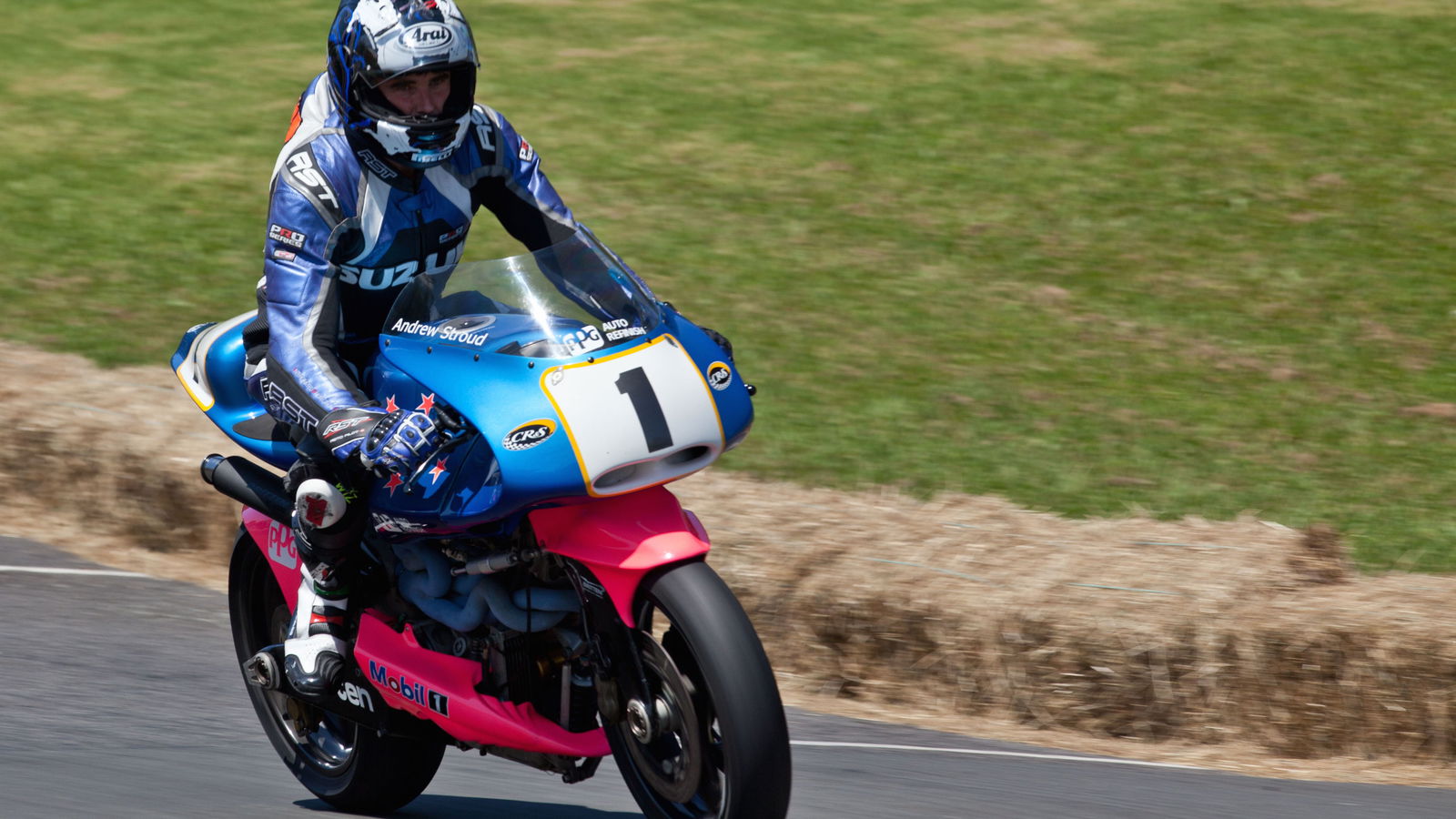
Designing and building a new motorcycle from scratch is a challenging process for manufacturers. Even with endless resources and huge reserves of money, it’s very rare that a new superbike is competitive straight out of the box. This can be a huge problem for high profile teams. A recent example occurred at the 2015 Isle of Man TT when bookies’ favourite Michael Dunlop took the controversial decision to abandon Milwaukee Yamaha and its Yamaha R1, declaring that there wasn’t “enough time left” to get the all new bike up to speed. Breaking his contract, Dunlop made the decision to ride his trusty old BMW instead, leaving the team in a whole world of trouble.
It’s challenges like these which put the the accomplishments of the Britten into perspective. Built by a group of close friends in the South Island of New Zealand, the custom-made V1000 didn’t just beat the major motorcycle manufacturers, it embarrassed them. There has never been a motorcycle before or since which was so innovative and revolutionary. Here’s why…
Amazing Resourcefulness
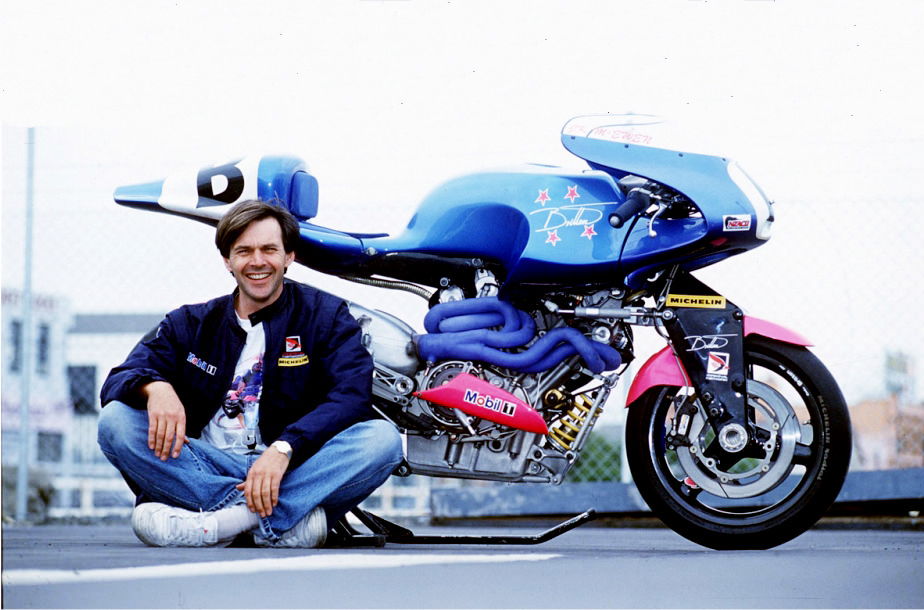
The international press once called John Britten the “most innovative engineer in the world”, but you’d never have known it based on his personality. A mechanical engineer and amateur racer, Britten was a humble New Zealander. He didn’t see himself as anything special. This was probably down to the fact that he lived on an isolated Island, so if he needed a part, he built it himself. To him it wasn’t a big deal.
It was this mindset that led to Britten constructing his own house from recycled materials, painstakingly casting each door handle because he couldn’t find exactly what he wanted. So it wasn’t much of a surprise to his friends and family when he decided to build the incredible V1000.
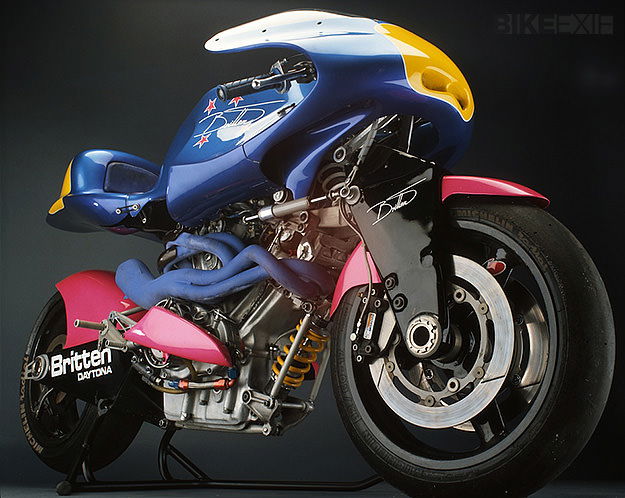
Now, when most people decide to build their own superbike or supercar, they tend to build parts like the chassis and the bodywork themselves, leaving the big components like the engine and wheels to external manufacturers. Not so with John; he decided to make almost every component from scratch. For example, the distinctive aerodynamic fairing was initially crafted using garden wire and stuck together with a glue gun to form a basic outline. This was then clay moulded and formed in home-made carbonfibre, at a time when the material was only used in Formula 1. Even the wheels and forks were made of the stuff.
Incredible Innovations
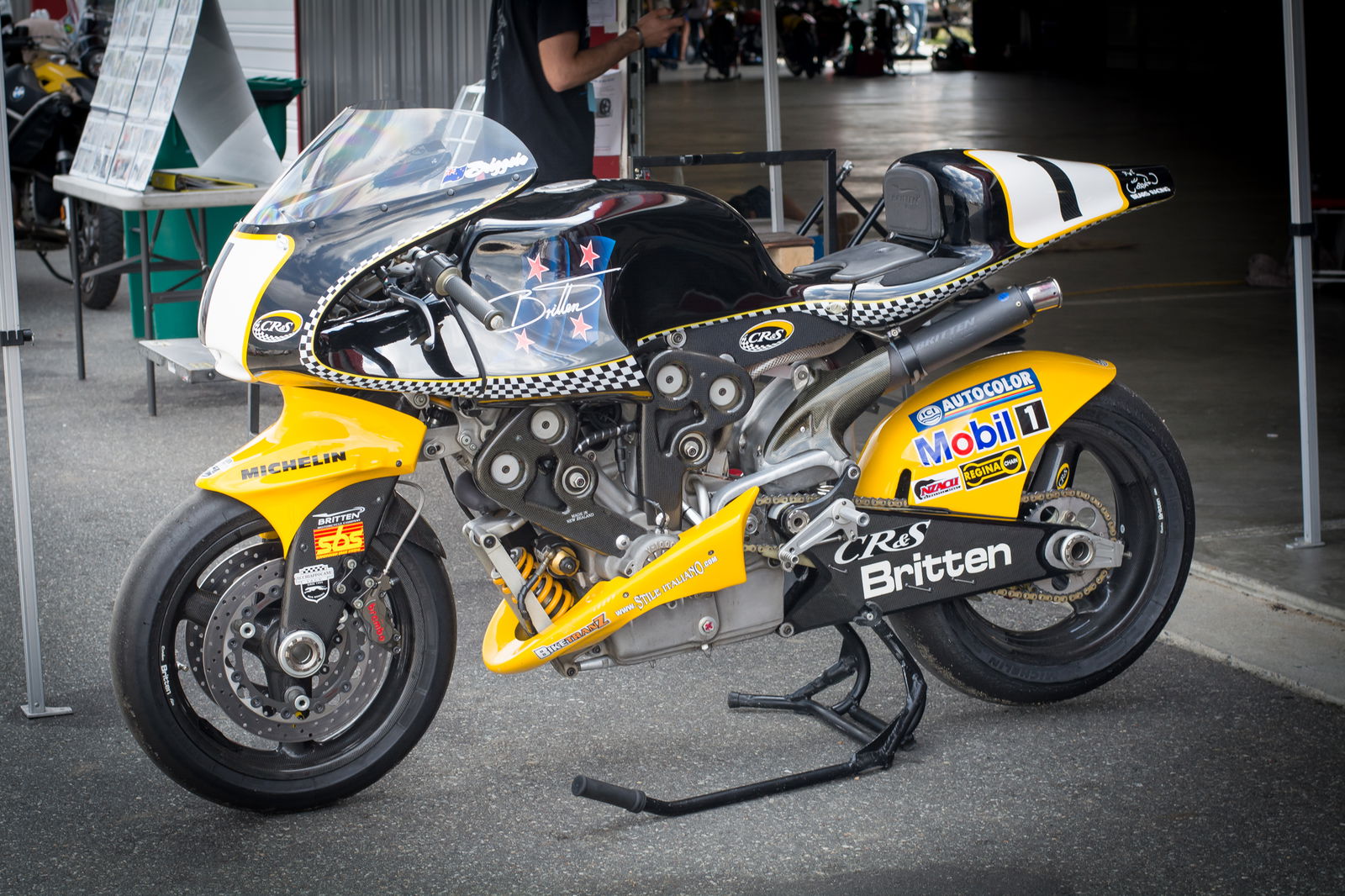
The innovations don’t stop there, however. The water-cooled, 1000cc, V-Twin engine was developed in-house. Britten heat treated the engine by placing it in his wife’s pottery kiln and would cool it with water from his swimming pool. And incredibly, the home-brewed 160bhp motor was far more advanced than the rest of the competition, even featuring a fully programmable ECU. Not bad considering this was 1991.
Surprisingly, the engine was just the start of the bike’s innovations. Unhappy with conventional front fork design, Britten decided that it could be done better. He created a fully adjustable girder (Hossack) style double front wishbone suspension system which was linked to an Ohlins racing shock. This was then connected straight to the V-twin motor, which in turn formed a stressed member of the chassis, just like a modern Ducati Desmosedici MotoGP bike. And thanks to the lack of a conventional frame, the bike was lighter than the competition, weighing just 145kg.
The rear suspension was also an example of lateral thinking. Instead of taking the easy route, the rear shock was mounted in front of the engine. The thinking behind this was to keep the shock cool by placing it in an area with high air flow.
Track Domination
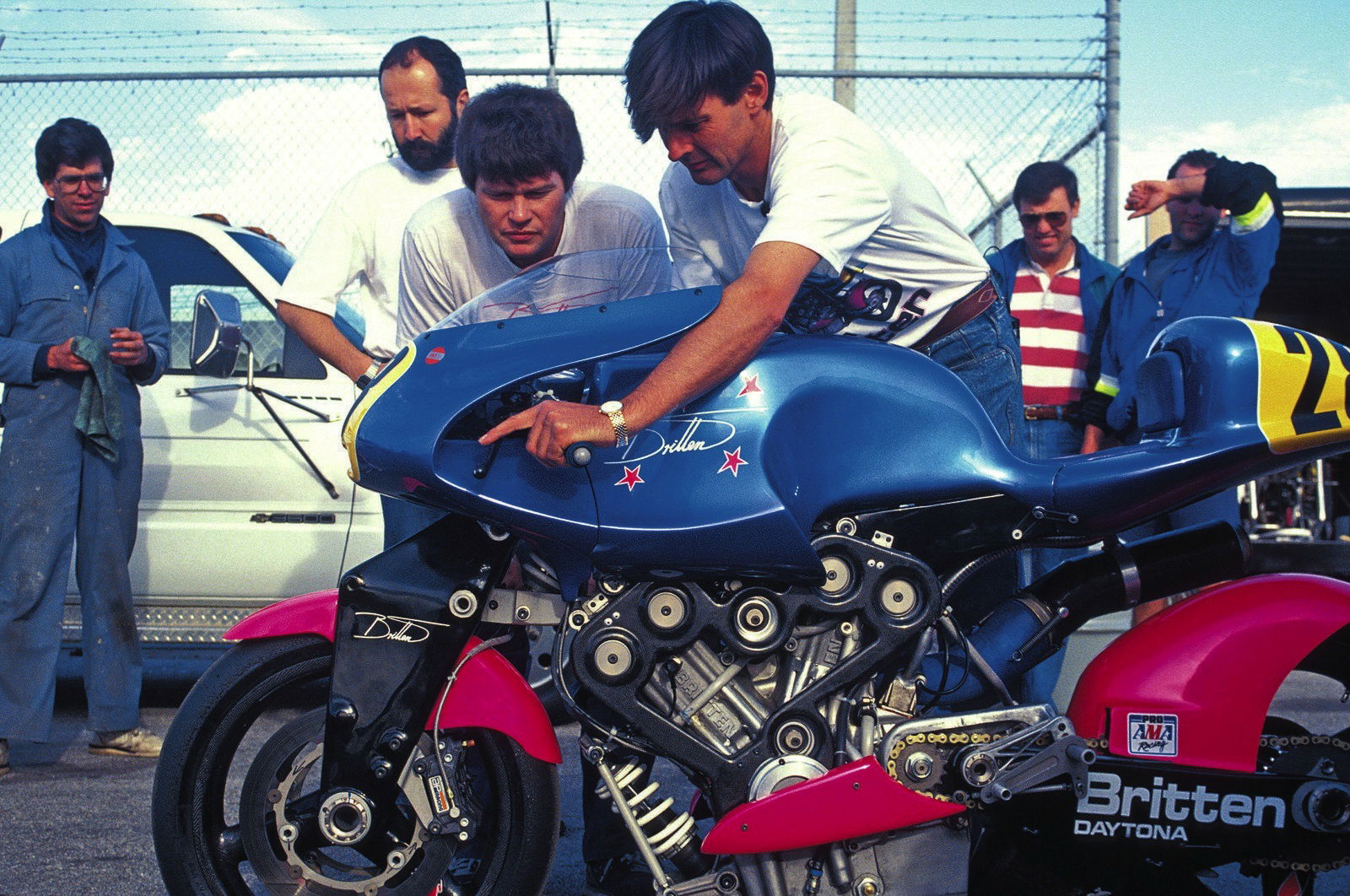
All of these innovations are impressive in isolation, but what made the Britten V1000 a legend was its on-track success. On its first outing at the 1992 Daytona Supertwins race the Britten led in spectacular style. The class-leading factory Ducatis just didn’t have the power to keep up with the machine from New Zealand; racer Andrew Stroud demonstrated this brilliantly by wheeling away from his rivals at every opportunity. Unfortunately, on the penultimate lap, one of the few parts that Britten hadn’t manufactured failed, denying the team its first victory. But even without the win, Britten had proved that his concept worked.
In the following years the Britten absolutely dominated at home and abroad. It won the New Zealand National championship in 1993 and 1994 and won multiple British European and American Race Series (BEARS) races across the same period. And in 1995, after a few years of key development, the bike won the BEARS championship outright and embarrassed the competition at Daytona, finishing 43 seconds ahead of the next closest rival.
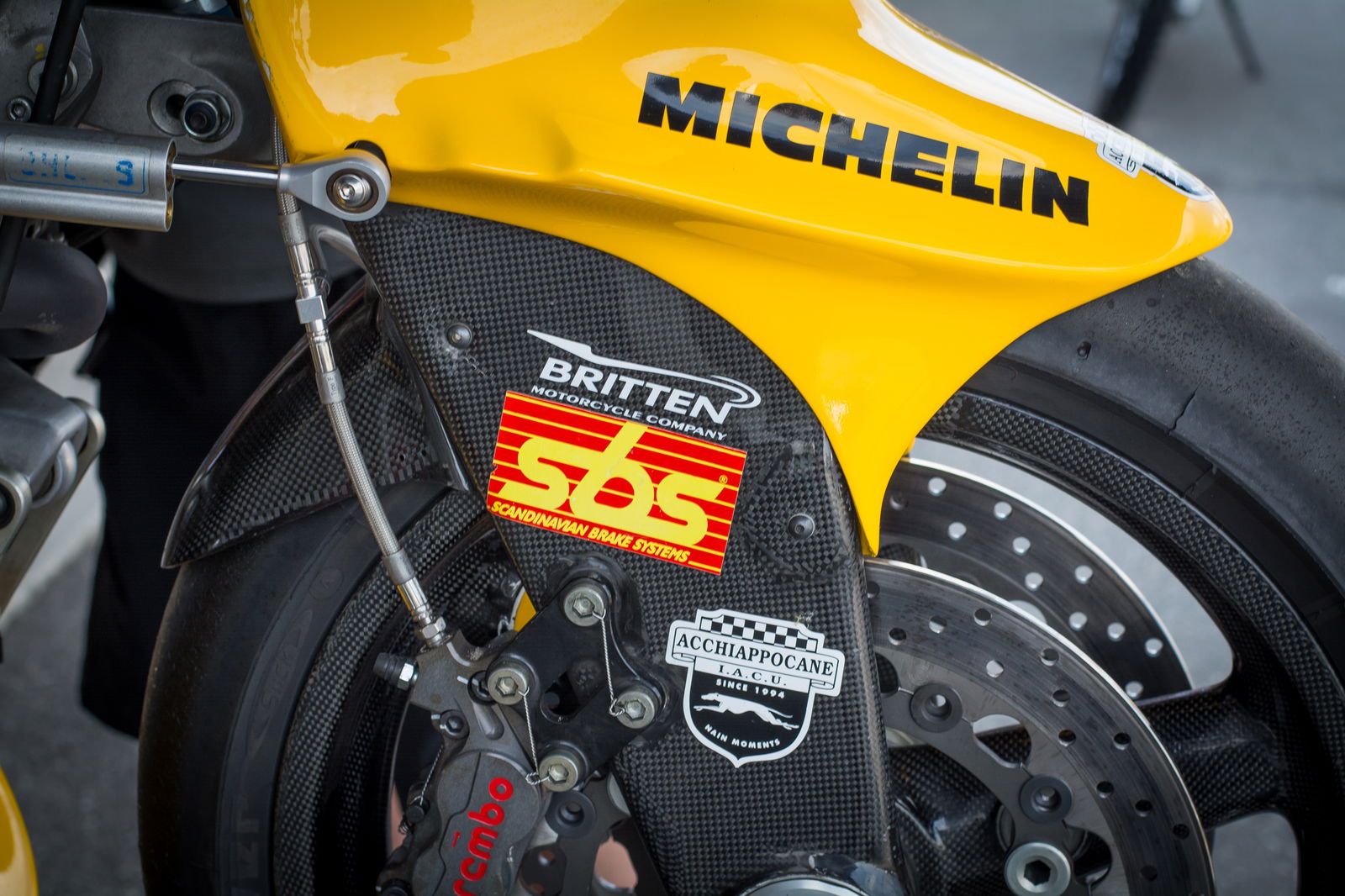
Unfortunately the Britten’s racing career wasn’t all positive. When the team returned to the Isle of Man TT after a successful test year in 1993 they experienced a major disaster. Their rider, Mark Farmer, a top British road racer at the time crashed in practice at the fearsomely fast bend Black Dub and was killed instantly. After an inquest the team could rest in the knowledge that the accident wasn’t due to bike failure, but the tragedy certainly took the shine off the team’s 1994 efforts.
Ground Breaker
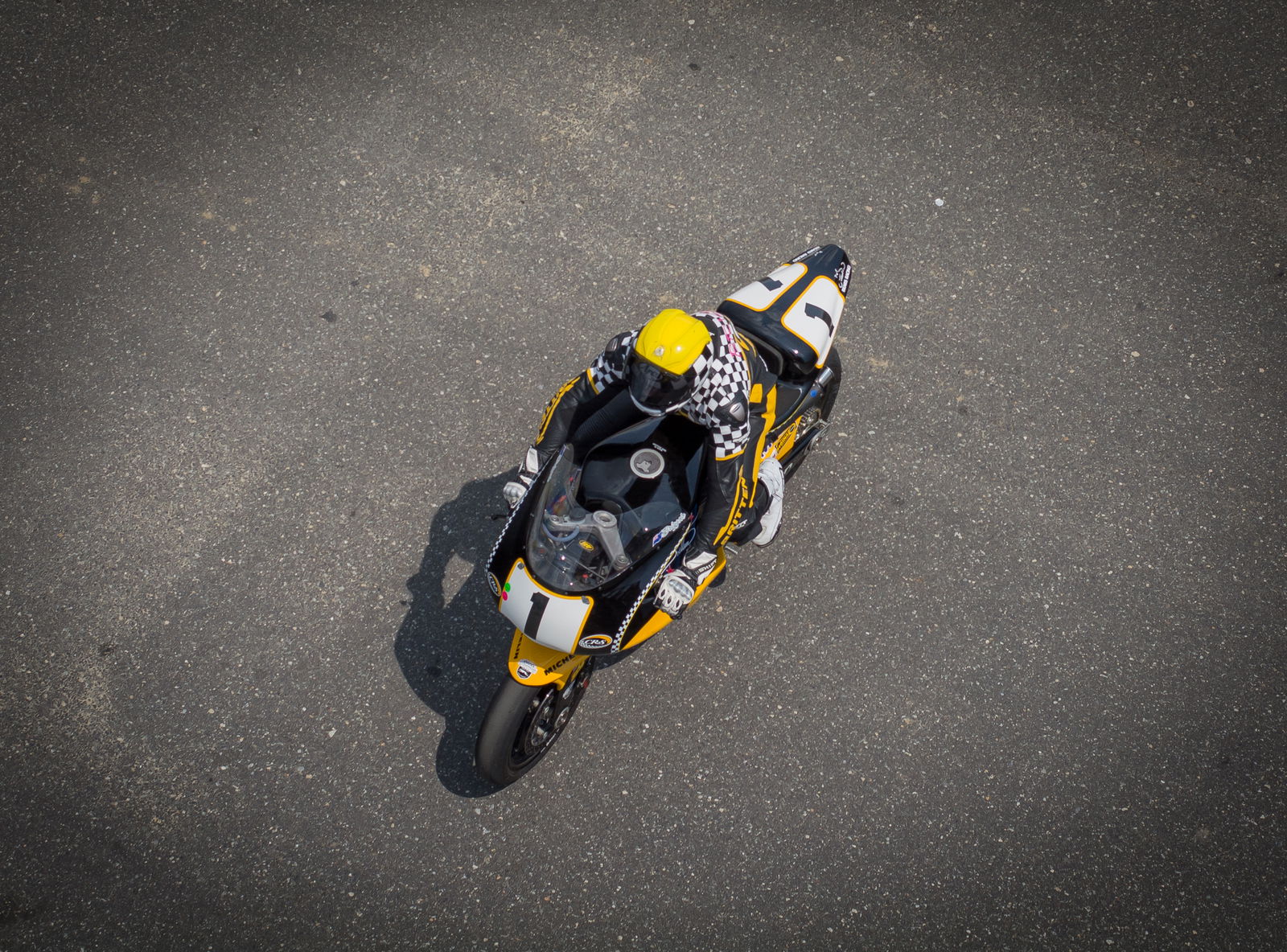
Not content with its on-track success, John and his team knew the V1000 could also be a record breaker. In 1994, the bike shattered four FIM World Speed Records in the 1000cc class, the most impressive being the Britten’s astounding 188mph (302kph) flying mile.
The bike also received recognition from the art world. Guggenheim curator Ultan Guilfoyle named John Britten as the man “who stood the world of racing-motorcycle design on its head”, and as a result the bike was featured in the New York Museum’s exhibition Art and the Motorcycle.
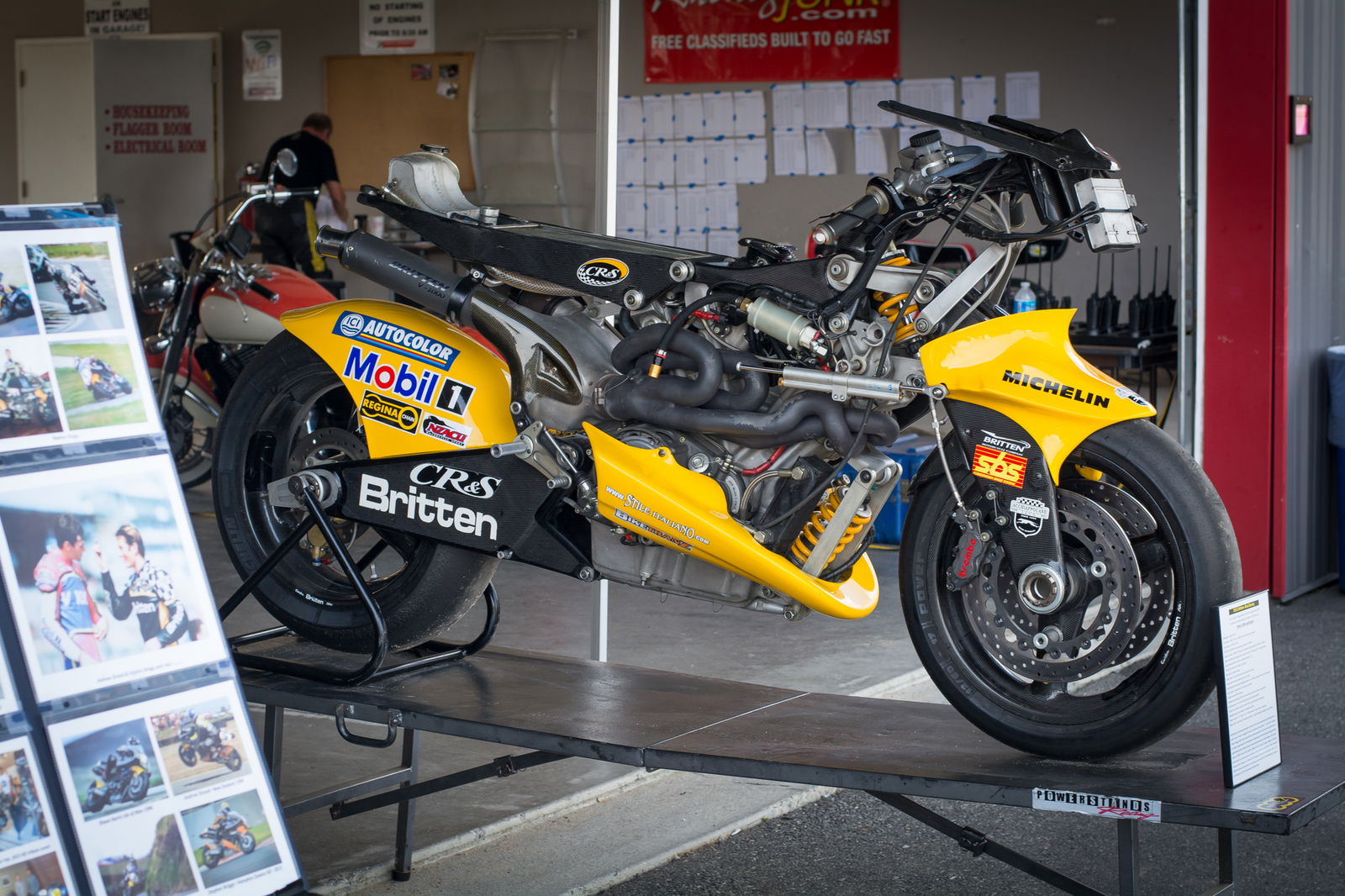
Unfortunately, just after the end of the 1995 season, John Britten was diagnosed with an aggressive form of cancer. He passed away very soon after aged just 45. Since his death Britten has gone on to receive international recognition with famous riders such as Guy Martin giving the bike global coverage.
Who knows what else this astonishing man could have achieved.
To find out more about the incredible Britten bike story, check out this DVD!












Comments
I met Andrew Stroud, his family and the Britten V1000. The guy is lovely and the bike is an absolute masterpiece, so cool to see something that has achieved so much come from our small country. Andrew stroud brought this bike to my little school in Rangiora, New Zealand. And left tyre marks outside my classroom. Awesome
A short documentary on the Britten
https://www.youtube.com/watch?v=FjXA6E0eqao
Everyone reading this article should really check out a close friend of Britten, that also passed away a few years ago, named Thanasis Lefas. I post here the wiki link to start exploring this brilliant mechanic: https://en.wikipedia.org/wiki/Lefas
Have seen a few of the John Brittens in person as my dad is close friends with a guy who owns 3 or so…Such a crazy cool bike. Hopefully im gonna be able to ride one later this year…!
New Zealand “an isolated island” mate we got wifi down under so we good
The tank and fairing are fiberglass. Hand made. Many components were hand laid carbon fibre. John had bought a large roll of carbon fibre ribbon and used this throughout.
There’s and excellent video of John making and racing the Britten.
Pagination